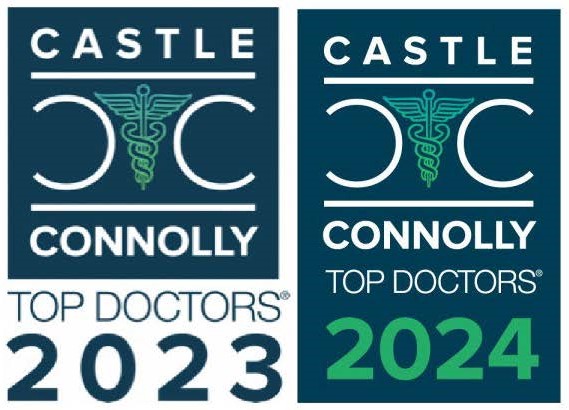
The mental health of college students is becoming increasingly complex, presenting numerous challenges that demand attention. Among these challenges are the rising rates of Posttraumatic Stress Disorder (PTSD) and Acute Stress Disorder (ASD).
Along with that, recent study revealed alarming trends in the prevalence of these disorders among the college population. This study emphasizes the urgent need for effective support and intervention strategies to address these issues.
What Are Post-Traumatic Stress Disorder and Acute Stress Disorder?
Posttraumatic Stress Disorder (PTSD) and Acute Stress Disorder (ASD) are two significant mental health conditions triggered by traumatic events. While they share several similarities such as the types of events that can cause them and some overlapping symptoms, they differ notably in their onset and duration.
Posttraumatic Stress Disorder (PTSD)
PTSD develops after a person experienced or witnessed a traumatic event. For instance, experiencing natural disasters, serious accidents, terrorist acts, war/combat, rape or other violent personal assaults. PTSD involves persistent and distressing symptoms. Which can significantly impair an individual’s daily functioning and quality of life.
Symptoms of PTSD include:
- Intrusive thoughts: Recurrent, involuntary memories, distressing dreams or flashbacks of the traumatic event.
- Avoidance: Avoiding reminders of the trauma. It could be avoiding places, people, or activities.
- Negative changes in thinking and mood: Feelings of hopelessness, memory problems, difficulty maintaining close relationships and detachment from family and friends.
- Alterations in arousal and reactivity: Irritability, angry outbursts, reckless behavior, hypervigilance and problems concentrating.
Accordingly about 6% of the U.S. population will experience PTSD at some point in their lives. But based on experts, women are more likely to develop PTSD than men.
Acute Stress Disorder (ASD)
Acute Stress Disorder or ASD on the other hand, is a short-term condition that can occur immediately after a traumatic event. As stated, the symptoms are similar to those of PTSD. But typically, only lasts from three days to one month. If the symptoms persist beyond a month and meet the criteria for PTSD the diagnosis may be updated to PTSD.
Symptoms of ASD include:
- Intrusive thoughts: Recurrent, involuntary, and distressing memories of the traumatic event.
- Negative mood: Persistent inability to experience positive emotions.
- Dissociation: Altered sense of reality of one’s surroundings or oneself, and inability to remember important aspects of the traumatic event.
- Avoidance: Efforts to avoid distressing memories, thoughts, or feelings closely associated with the trauma.
- Arousal: Sleep disturbances, irritability, hypervigilance, concentration problems, and exaggerated startle response.
- Anxiety: Excessive worry, nervousness, and heightened fearfulness.
The Relationship Between ASD and PTSD
There is a significant relationship between ASD and PTSD. Research indicates that over 80% of individuals diagnosed with ASD will develop PTSD within six months. This statistic underscores the importance of early intervention and treatment for those experiencing acute stress reactions. However, not everyone with ASD will progress to PTSD.
Conversely, it is also important to note that PTSD can develop even in the absence of ASD. Studies show that between 4% and 13% of individuals who do not exhibit symptoms of ASD in the first month post-trauma may develop PTSD later. Undoubtedly, the need for ongoing support and monitoring of trauma survivors is a must.
Why Are PTSD and ASD Rising Among College Students?
The rise of Posttraumatic Stress Disorder (PTSD) and Acute Stress Disorder (ASD) among college students is an alarming trend that demands urgent attention. Triggered by traumatic events such as campus shootings, sexual assaults, physical violence, and natural disasters. These mental health conditions severely impact students’ academic and social lives.
More than just an individual issue, the broader societal implications include reduced workforce productivity and increased healthcare costs. Likewise, understanding the prevalence and factors contributing to this rise is really important. And when it comes to solutions, developing effective trauma-informed interventions becomes paramount.
Methods
A research conducted from 2017 to 2022 by the University of Alabama at Birmingham assessed the trends in diagnosed PTSD and ASD among US college students. This serial cross-sectional study utilized data from the Healthy Minds Study. This included participants from 332 diverse higher education institutions across the United States.
The researcher followed the STROBE reporting guideline. They also applied sample weights based on institutional demographics to ensure representativeness and mitigate response biases. On top of that, the prevalence of PTSD and ASD was determined based on diagnoses issued by healthcare practitioners.
Results
The study has 392,377 participants. And the majority (57.7%, weighted) are female. The findings revealed a significant upward trend in the prevalence of PTSD and ASD among college students over the five-year period. The prevalence of PTSD increased from 3.4% in 2017-2018 to 7.5% in 2021-2022. This represents a 4.1 percentage point rise. Similarly, the prevalence of ASD rose from 0.2% in 2017-2018 to 0.7% in 2021-2022. A 0.5 percentage point increase.
Discussion
Several factors contribute to the rising rates of PTSD and ASD among college students. Pandemic-related stressors such as the loss of loved ones and social isolation, have exacerbated mental health issues. Additionally, the increasing incidence of campus shootings, racial trauma and other violent events has led to higher levels of trauma exposure among students.
Despite the study’s limitations—such as the reliance on self-reported data and single questions for diagnosed PTSD and ASD—the findings underscore the escalating mental health challenges faced by college students. With these constraints in mind, the results still highlight a significant and growing issue. The mental health of college students is increasingly at risk.
Broader Implications
Academically, these students often struggle to focus, meet deadlines, and participate in class. Socially, they may withdraw from peers. Which may lead to isolation. In the long-term they may face chronic mental health issues like depression and anxiety.
Economically, this increase means higher healthcare costs and reduced workforce productivity. As they enter the workforce, mental health issues cause absenteeism, decreased performance, and higher turnover rates.
What Can Students Do to Manage PTSD and ASD Symptoms?
Supporting college students with PTSD and ASD requires a comprehensive approach that addresses their unique needs and challenges. Some strategies to help these students thrive academically and socially are:
Increase Access to Mental Health Services
Colleges and universities may enhance access to mental health services. This includes expanding counseling centers, providing 24/7 crisis hotlines and even offering telehealth services. The number of students seeking assistance at campus counseling centers surged by nearly 40% between 2009 and 2015. And this trend continued to grow until the onset of the pandemic. Therefore increasing access to mental health resources can ensure more students get the help they need.
Implement Trauma-Informed Care
Implementing trauma-informed care involves training faculty and staff to recognize and respond to signs of trauma. Additionally, establishing safe spaces and promoting a culture of understanding and empathy are essential. And consequently, these trauma-informed approaches can significantly reduce PTSD symptoms and improve overall well-being.
Promote Peer Support Networks
Peer support networks can provide invaluable emotional and social support. Encouraging the formation of student-led support groups and peer mentoring programs may help students feel less isolated and more connected. Studies have shown that peer support can improve mental health outcomes and increase resilience among students.
Encourage Self-Care Practices
Encouraging self-care helps students manage their symptoms. This includes regular exercise, healthy eating, mindfulness and adequate sleep. Colleges can offer workshops and resources on stress management and self-care techniques to support students mental health.
The Role of TMS in PTSD Treatment
Advanced therapies like Transcranial Magnetic Stimulation (TMS) can effectively help those with PTSD. TMS uses magnetic fields to stimulate brain nerve cells, improving PTSD symptoms. This innovative treatment has shown promising results. Especially for those unresponsive to medication and talk therapy.
Luckily, our approach at the TMS Institute of Arizona is always patient-centered. Meaning each individual receives personalized care tailored to their specific needs. We assess each patient to determine if TMS is suitable and monitor progress to optimize treatment. TMS offers a safe, effective option for those with PTSD. Helping them reclaim their lives and improve mental health.
Mainly, TMS therapy is great for college students dealing with academic pressures and PTSD. It is non-invasive, no anesthesia and no long recovery time needed. Convenient for busy schedules. Plus, with only minimal side effects compared to medication. A solid alternative for long-term mental health management. Contact us for a consultation.
References
Abrams, Z. (2022). Student mental health is in crisis. Campuses are rethinking their approach. Https://Www.apa.org. https://www.apa.org/monitor/2022/10/mental-health-campus-care
Novotney, A. (2017, August 17). Women who experience trauma are twice as likely as men to develop PTSD. Here’s why. Https://Www.apa.org. https://www.apa.org/topics/women-girls/women-trauma
Richard, J., Rebinsky, R., Suresh, R., Kubic, S., Carter, A., Cunningham, J. E. A., Ker, A., Williams, K., & Sorin, M. (2022). Scoping review to evaluate the effects of peer support on the mental health of young adults. BMJ Open, 12(8), e061336–e061336. https://doi.org/10.1136/bmjopen-2022-061336
VA.gov | Veterans Affairs. (2014). Va.gov. https://www.ptsd.va.gov/understand/related/acute_stress.asp
VA.gov | Veterans Affairs. (2020). Va.gov. https://www.ptsd.va.gov/understand/common/common_adults.asp
VA.gov | Veterans Affairs. (2020). Va.gov. https://www.ptsd.va.gov/understand/common/common_adults.asp
Zhai, Y., & Du, X. (2024). Trends in Diagnosed Posttraumatic Stress Disorder and Acute Stress Disorder in US College Students, 2017-2022. JAMA Network Open, 7(5), e2413874–e2413874. https://doi.org/10.1001/jamanetworkopen.2024.13874













